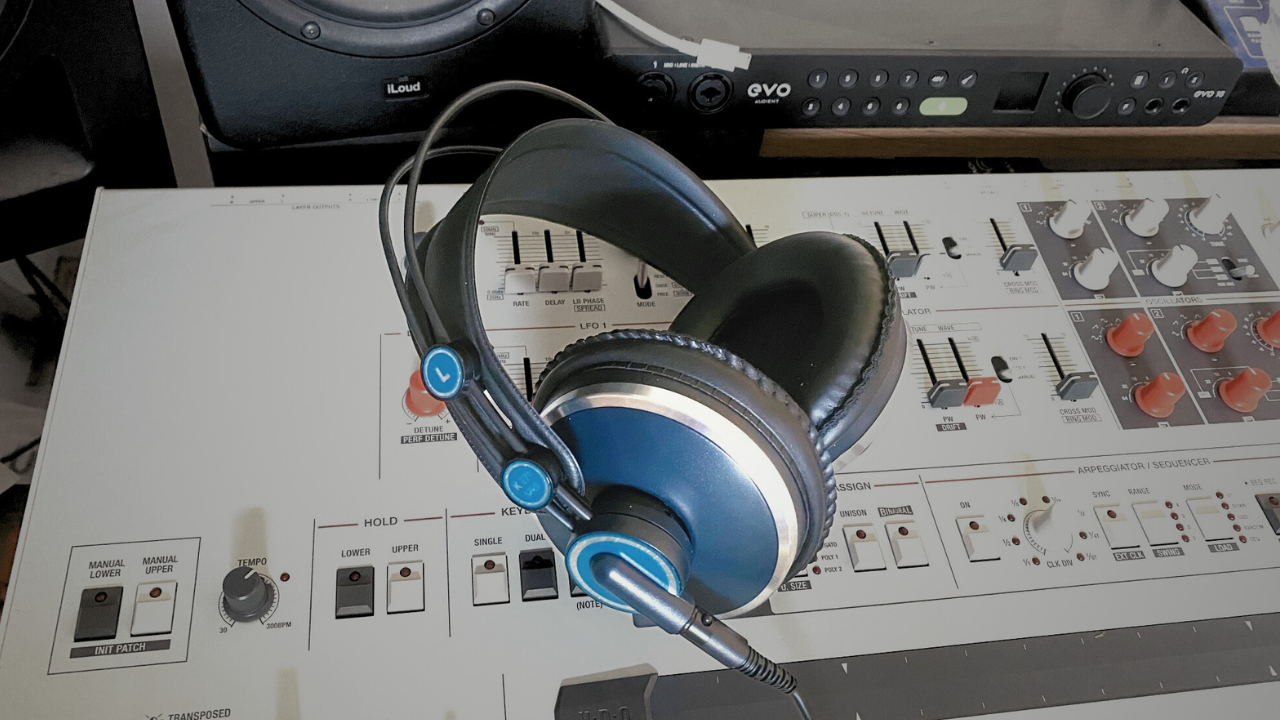MusicRadar Verdict
A lot of headphones for the cash, with a few shortcomings made up by a decent sound and good comfort options
Pros
- +
Lightweight and comfortable
- +
Choice of ear pads and cables
- +
Good sound stage
- +
Great mids and highs
Cons
- -
Lacking bass
- -
No carry case
- -
Plastic feel
MusicRadar's got your back
AKG K271 MKII review: What is it?
Believe it or not, AKG has been making headphones for over 75 years so boasts more experience than most, with a lot of it packed into its K-range, designed for studio engineers, musicians and DJs. The range has models of all shapes and sizes, from around £40/$50 for the K52 studio headphones right up to an eye-watering RRP of $1,812 for the K812 mastering reference 'phones.
Fortunately, the K271 MKII reviewed here – the most recent update to the original K271 phones released back in 2003 – weigh in at just over $£100, so are aimed at the project studio owner or live monitor engineer after cans that deliver a decent accuracy and vibe for a reasonable outlay.
They are light in weight (240g), over-ear, closed-back headphones, designed with good isolation, so should be ideal for detailed mixing with few external distractions, and also good for live recordings because they should have minimal spill or bleed that could be picked up by a microphone.
Out of the box you get the K271 MKIIs, a straight EK300 3m cable, a 5m EK500 coiled cable, a 1/8" to 1/4" (3.5mm to 6.3mm ) adaptor, and a pair each of velvet and leatherette ear pads. With ear comfort in mind, a spec that covers a good frequency range and more (16Hz to 28kHz) and that lightweight design, which should be good for long listening sessions, these 'phones already tick a few boxes for long mixing and monitoring sessions.
AKG K271 MKII review: Performance & verdict

Because of their weight and plastic design – especially with the leatherette pads fitted as standard – the K271 MKIIs don't exactly feel like the best quality headphones. Looks-wise, these are based on the now classic AKG design, and while that feel won't appeal to everyone, the large ear pads are designed for comfort rather than aesthetics, and here they score well.
The weight has its plus sides because wearing them, especially over long mixing sessions, does not feel restrictive or uncomfortable – sometimes you even forget they are there. They are easy to self-adjust to fit too, and certainly feel tight enough, without clamping too hard on your head.
A quick note on portability as there is no case (soft or hard) supplied, nor do the 'phones fold up, so they are definitely designed for studio mixing rather than out and about listening. One neat feature, though, is that the 'phones stop playing when you take them off. While we're not sure whether this is a deal-breaking addition, it is handy when you are interrupted during listening.
Want all the hottest music and gear news, reviews, deals, features and more, direct to your inbox? Sign up here.

The isolation is good but doesn't shut the world away as much as some headphones we have tried. Using the velvet pads here helps isolate your mixing from external noise and is also more comfortable, so we'd certainly recommend trying both sets of pads out. It's great to get this pad choice and also both the coiled and straight cable options – not always a given with headphones.
For mixing we found the sound to be balanced and accurate enough so that mixes are presented in an even way, and picking track elements out is therefore relatively easy. The sound stage is good for closed-back headphones, which tend to sound narrower than open-back phones in this regard, and there's certainly enough width for you to place mix elements accurately.
We did find the bass to be a little lacking but decent enough to pick out different low-end elements and separate both kicks and synth bass, for example. However, if you are mixing bass-heavy music, you might have to take care not to boost the lows too much to compensate, as that might transfer into an unbalanced mix on your reference system.

On the plus side, the upper mids and high-end frequencies are clear, detailed and sharp, all well-presented and easy to place. Mixing vocals is especially suited to the K271 MKIIs, then, and acoustic instruments, strings and detailed percussion particularly shine, and you'll find yourself making easy and precise adjustments across these instruments.
Overall the K271 MKIIs offer a lot of headphones for the cash, with good choice options, and very decent sound for both live and studio applications. If you can live without the need to take them on the road and with some work to do at the low end, they'll make a great set of workhorse 'phones to use for monitoring, recording and AB mixing.
AKG K271 MKII review: Hands-on demos
Moji Visuals
Hi-Fi Insider
Guitar Center
AKG K271 MKII review: Specifications
- Transducer: Dynamic
- Transducer diameter: 40mm
- Freq Range: 16Hz to 28kHz
- Impedance: 55 Ohms
- Sensitivity: 104 dB SPL/V
- Max. input power: 2000mW
- Accessories: 3m straight cable, 5m coiled cable, 2 sets of ear pads, 3.5mm to 6.3mm adaptor Weight: 240g (without cable)
- Contact: AKG
Andy has been writing about music production and technology for 30 years having started out on Music Technology magazine back in 1992. He has edited the magazines Future Music, Keyboard Review, MusicTech and Computer Music, which he helped launch back in 1998. He owns way too many synthesizers.




